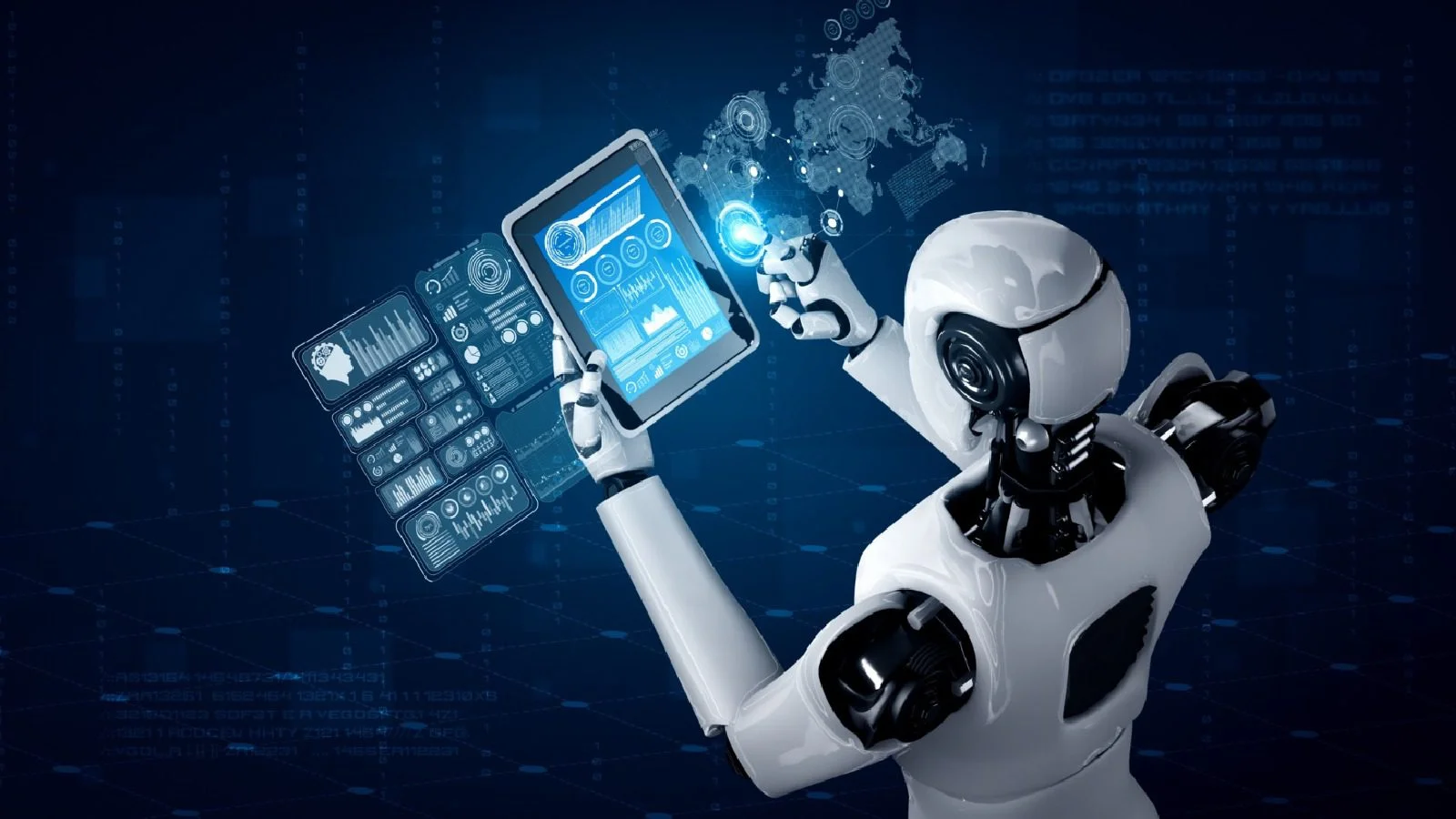Copyright techgenyz

AI agents automate repetitive knowledge tasks, boosting efficiency.They augment human roles, shifting focus to creative and strategic work.Success depends on reskilling, fair value sharing, and human–AI collaboration. The inquiry settles in as a moral parable against the background of technologies and talking about one’s livelihood: if a software program can draft a report, respond to a customer question, create a slide deck and summarize a meeting, what will happen to the person who performed those tasks? By 2025, “AI agents”, which are intelligent and increasingly autonomous systems that permit multi-stepping several tasks, plan, act and follow up, across multiple tools, will evolve from laboratories to offices. The headlines read promisingly dystopic. In real life, for most workplaces, AI agents will change both how knowledge work looks and which tasks will be done by people, but a mass leaving of skilled knowledge workers and the catastrophes that may follow, will (in most cases) neither be instantaneous nor smooth. What can agents do? “AI agents” are systems capable of taking goals – for example, “create a marketing brief” – and coordinating several actions: search, summarize, draft, contact by email, and iterate. They are distinct from simple single-query chatbots, as they can chain actions, call APIs, and start to operate semi-autonomously inside productivity stacks. AI agents can help to accelerate routine cognitive labour: classification, summarisation, iterative, repetitive drafting, simple data extraction, etc., at scale and faster than humans can do. This is significant because much knowledge work today is, in practice, a combination of such repetitive tasks. Large-scale empirical research and internal business analyses show quick adoption of AI4K properties: Neumann and organizations saying they widely use Copilot and assistant-based tools, and all consultancies reporting increasing readiness to employ AI in professional work. These signs imply that there is substantial room to augment professional work and, therefore, pressure on work predominantly in the form of repeatable tasks. Tasks versus jobs It is critical that one important distinction is clarified: agents automate tasks, not jobs. Knowledge-work positions are combinations of tasks- some are focused on creativity, context, and relationships; while others are repetitive or procedural. Some studies and reports from employers point to the ability of an agent to automate a large proportion of abolish repetitive tasks (e.g. composing emails from a template, obtaining an overview of a document, and performing initial data preparation), but struggle with tasks that require a high degree of notice or judgment, require deep knowledge of the domain, the ability to navigate the landscape of workplace politics, or require personal relationships, human empathy and connection. In other words, there is very rarely a simple removal of a job; in many cases, it represents a redistribution or reallocation of time – less time performing rote work for an employee, and more time performing synthesis and strategic work or connecting with other humans. Some examples from Microsoft and several studies represent an interesting finding that workers are using agents in their jobs – they not only increased throughput, but workers are evolving what they do to spend less time performing repetitive tasks (e.g. revising new workflow of synthesized work) and spend more time providing skill for high-value or complex back and forth work. Early Examples of replacement Certain well-known cases indicate that displacement is already taking place in particular niches. Companies that manage substantial amounts of daily routine interactions with their customers have put agentic systems to replace what used to be human-aided support workloads. One enterprise publicly stated that they had replaced thousands of humans with automated agents and monitored many service metrics during this right-sizing. This offers an understandable trajectory: in the areas where the tasks are high-frequency, low in structure, and simple to evaluate, automation will quickly substitute humanity. But those are also roles that are generally lower-paid, routine-type roles in the knowledge-work environment. Augmentation and productivity For many professionals, the first encounter with agents is augmentation: faster background research, cleaner first drafts, automated meeting notes, and prototypes that would have previously taken days. If companies use agents in a thoughtful manner, productivity should improve, and workers can be move to higher value work. That said, augmentation brings about distributional questions: who is going to capture the productivity gains? If businesses capture all of the value (cost reductions, fewer higher salaries), workers may only have the ability to produce more for the same pay, perpetuating inequality unless business pair their augmentation efforts with reskilling or sharing in any gains generated by the agent systems. There is also a “new job” question. Historically, automation produces different jobs in the ecosystem, roles such as orchestration and oversight, agent trainer, prompt engineer, and validation specialist, that are complementary to the machine. However, creating and scaling these new roles takes time, investment, and policy supports. The transition is messy: Not every displaced worker can glide into more skilled supervisory roles without training and institution support. Recent surveys/reports therefore highlight the need for reskilling, redefining jobs and changing work practices, rather than just blindly rolling out hardware/software. Limits and failure of agents Artificial Intelligence agents are skillful, yet their knowledge is not expert. They hallucinate, misinterpret ambiguity, mishandle sensitive context, and can make brittle decisions when system and API changes occur. They carry bias and if unmonitored will exacerbate errors. This means humans must still validate, set limitations and manage edge cases. For many organizations the safe pattern is agents as junior associates: they conduct drafts and surface options, while humans make decisions. In addition, technical and organizational constraints complicate the replacement. Making agents work with legacy systems, ensuring data is governed and protected, and avoiding regulatory or reputational harms are significant undertakings that inhibit speed of adoption. Nvidia, Microsoft and major cloud vendors call out agent potential, but all also describe a phased-in deployment as enterprises work to reconcile tooling, compliance, reliability, and human oversight. Who are at risk? The most exposed occupations will consist of any required roles with established repeatable tasks: transactional customer support, basic legal document review, certain research-collection jobs, and content made from templates. Manual labor, negotiating complicated interpersonal interactions, ironclad experience extraction, and thinking up a synthesis are a ways off from current versions of AI and LR. However, for example, if there is an initial draft of an idea, that may or may not require a human, considering our past experiences using and implementing concepts from Focused Instruction, we just need to prepare for chatting about our idea, because something computable and reusable just drafted some of the linear ideas. The emergence of AI agents does not mean the end of human knowledge work, but a new transformation of it. AI agents will continue to change the configurations of human knowledge work in organizations. Yet, it will be an evolution that is more complex than mere replacement of the human with a machine. AI agents can certainly automate most of the mundane, repetetive, rule-bound and measurable cognitive work of humans. Nevertheless, AI agents have not developed creativity, judgment, empathy and contextual understanding that a human has. The outcome is not the death of human knowledge work – nor a world without humans into in the future It is however – a partnership with humans and AI, whereby AI does the dreary work and humans can will work on the meaningful work. It will not be without disruption however, and without challenge. This shift, if not managed correctly will enhance inequality – with workers that cannot adapt and those who can easily shift and adapt. There will be an inequality of organizations that upskill their people, and those that downsize altogether, and move on without their employees. The positive promise of AI augmentation will only be realized when companies and policy makers reinvest some of their productivity that AI creates to empower human beings through reskilling opportunities, the right compensation schemes, and a shared commitment on behalf of all stakeholders to see progress as shared, and not only profit motivating.



